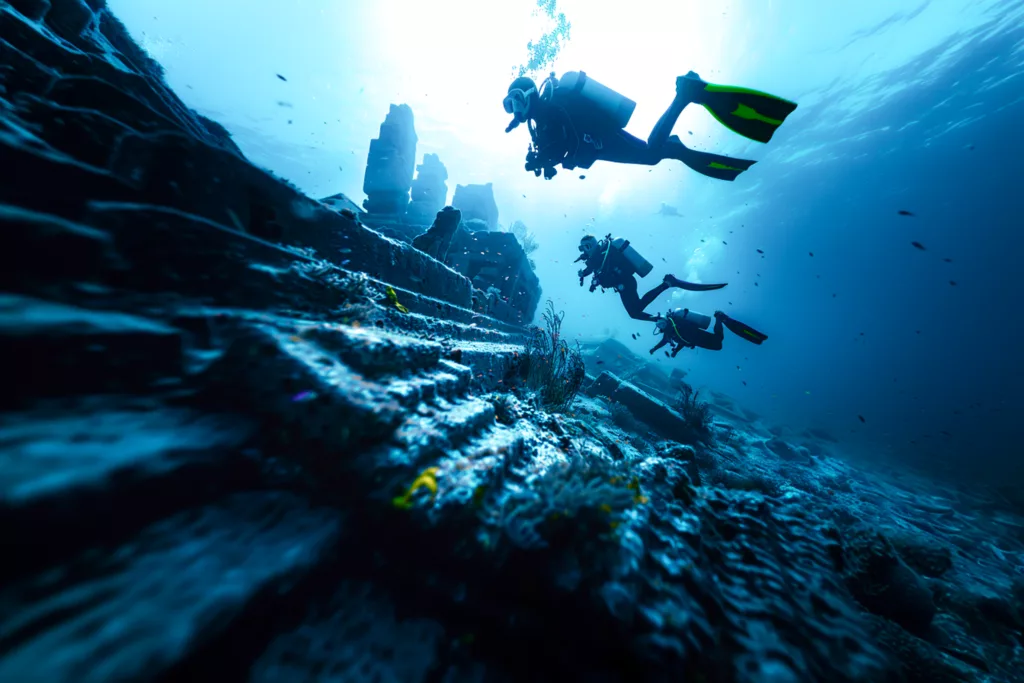Picture this: crystal-clear waters, vibrant coral reefs, and an underwater paradise brimming with marine life. Diving in Bali is the ultimate underwater adventure, a must-visit for any scuba diving enthusiast. However, seasickness can be a real dampener on your dream diving trip. Fear not! We’ve compiled the ultimate hacks to ensure you conquer seasickness and fully enjoy the best dive sites Bali has to offer.
Understand Seasickness: The How and Why
Seasickness, often a diver’s worst nightmare, stems from a conflict between the brain, inner ear, and eyes. When you’re on a rocking boat, your inner ear senses motion that your eyes do not see, causing a disorienting effect and, ultimately, nausea. Understanding this can help you take proactive measures to prevent it. Recognition is the first step: acknowledge the symptoms like dizziness, sweating, and an upset stomach early on to tackle them head-on.
Choose the Right Diving Sites

Proper planning can significantly reduce the chances of seasickness. Select dive sites known for their calmer waters. Many Bali diving spots, such as Tulamben and Amed, offer tranquil conditions ideal for beginners and those prone to seasickness. Keeping to near-shore locations can also be beneficial as they tend to be less affected by rough sea conditions.
Prep Your Body: Nutrition and Hydration
Your diet plays a pivotal role in preventing seasickness. Avoid heavy, greasy meals before your dive; instead, opt for light snacks like fruits and nuts. Staying hydrated is crucial, but avoid excessive caffeine and alcohol as they can exacerbate symptoms. Ginger, known for its anti-nausea qualities, can be a lifesaver. Consuming ginger tea or ginger candies before and during your dive could significantly help.
Equip Yourself: The Power of Preparation
Being prepared with the right gear can make all the difference. Scopolamine patches, over-the-counter motion sickness pills, or acupressure wristbands can be highly effective. Always carry them in your dive kit. Additionally, ensuring proper ventilation on the boat and staying on the deck instead of inside the cabin helps as fresh air reduces the feeling of nausea.
Onboard Techniques and Tips
Once on board, various tricks can keep seasickness at bay. Fix your gaze on the horizon to help align your inner ear and eye signals. Sit at the midsection of the boat where movement is least felt. Engage in distracting activities, whether chatting with fellow divers or preparing your gear. Keeping your mind occupied can divert attention from the rocking boat.
Pass the Test: Dive with Confidence

The pre-dive jitters can sometimes make seasickness worse. Calm your nerves with deep breathing exercises or gentle meditation. Ensure you’re well-rested before your trip, as fatigue often heightens seasickness. Finally, take the plunge with confidence. Remember, the more you dive, the better you adapt to the boat’s movements.
Plunge into Adventure, Nausea-Free
Seasickness shouldn’t stand between you and the mesmerizing underwater adventures that await in Bali. With proper understanding, adequate preparation, and the right techniques, you can beat the waves and make the most of your scuba diving experience. Dive into Bali’s must-visit dive sites with confidence and relish every moment of your journey through Indonesia’s aquatic wonders.

I’m impressed by the range of tips and techniques shared in this post! As a beginner diver, I was worried about seasickness but now I feel more confident to tackle it. Thanks Pebble & Fins for sharing your expertise!
Thank you so much, Yasmin! We’re thrilled to hear that our tips and techniques have helped boost your confidence in tackling seasickness. Remember, as a beginner diver, it’s all about being prepared and staying calm. Our resort is dedicated to providing an unforgettable experience for all our guests, including diving enthusiasts like yourself. When you visit us, we’ll be happy to share more insider knowledge on how to make the most of your diving adventure. Don’t hesitate to reach out if you have any questions or need further guidance. We’re always here to help! Feel free to contact us at [email protected] or call us at +62 857 3891 8262. Looking forward to welcoming you to our resort!
Love how Pebble & Fins shares tips and hacks for seasickness! As a dive enthusiast, I can attest that understanding the causes of seasickness is key to enjoying our underwater adventures. This post has got me excited to plan my next Bali diving trip!
Dear Siti Nuraini, thank you for sharing your enthusiasm about our seasickness tips! We’re thrilled to hear that our post has got you excited to plan your next Bali diving trip. At Pebble & Fins, we believe that education and job opportunities can have a real impact at the local level. While in the making, you will progressively see that our resort has dedicated training facilities for our local staff and those around us. Revisit us from time to time again join us in our mission to change the world, one resort at a time. If you have any questions or would like to learn more about our initiatives, please don’t hesitate to reach out to us at [email protected] or +62 857 3891 8262. Looking forward to hearing from you again!
Great article Pebble & Fins! As someone who’s prone to seasickness, I appreciate the emphasis on proper planning and preparation. Tulamben and Amed are definitely on my list for our next Bali trip.
Hi Kavin Raj, thank you for sharing your thoughts on our article! We’re thrilled to hear that you found the emphasis on proper planning and preparation helpful. Tulamben and Amed are indeed wonderful diving spots in Bali, and we hope you get to experience their tranquility firsthand soon. Remember, at Pebble & Fins, we’re committed to making a positive impact in our local community. Don’t hesitate to reach out if you need any more tips or advice on your future diving adventures. We’d be happy to help! Feel free to contact us at [email protected] or +62 857 3891 8262.